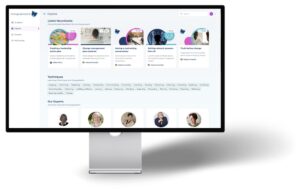EU AI Act on Change Initiatives: How to Include the New Legislation
I know legislation is never an exciting topic but…this time I think the very tough stance the European Union is taking on how AI is used at work could be helpful.
My experience of new legislation is that senior leaders are worried about compliance, so explaining how what I want to talk to them about ensures we are meeting the requirements of the latest rules increases the chances they will meet with me!
In this insight, i’ll be diving into the AU AI Act on Change Initiatives.
EU AI Act
To get started, lets have a quick look at this new legislation:
It assesses AI from a risk perspective, stating that very high risk AI which could harm society including social scoring, which can be biased and invades our privacy is banned.
For other AI, there are strict rules on documenting and testing the AI so how it has been developed and how it works is clear to everyone.
Staff must be trained in how the AI works so they can spot if it is not working as expected, and they must be able to explain to others when AI has been used and how decisions have been reached.
This means everyone has a role to play in AI – AI is not just something that the IT department commissions or develops. Deployment requires a deep understanding of who is impacted, who is responsible and what they need to be trained in.
I have been working on the impacts of AI on the future of work for the last couple of years, and even published this AI governance policy on my website 18 months ago.
EU AI Act and Change Initiatives
There are two important impacts of AI that I am building into the scope of change initiatives:
- Ensuring the future state considers the balance of work between humans and machines
- Developing organisation structures that include the use of AI as standard
I have noticed in my recent executive/senior leader workshops that highlighting the need for these answers generates respect for the change process. By being well informed about the latest legislative requirements, I am ensuring that the changes we are putting in place are “future proofed”. Participating in change activities is adding greater clarity to their vision of the future and reducing possible mistakes and failures.
1. Ensuring the future state considers the balance of work between humans and machines
Even at this early stage of AI use, lots of us are turning to tools like ChatGPT and Claude.ai to speed up regular tasks. Creating reports, presentations and other communications is very common. Reviewing and summarising large volumes of data and information is easy and quick. Developing new processes using best practice from all the data in the AI tool increases the quality of how we do things.
These are examples of generative AI – AI that creates content for us. Agentic AI takes on more responsibility, identifying next steps and developing new actions to give us information we had not asked for, but which is relevant and useful.
In my sessions with senior leaders, I emphasise that AI opens up many new possibilities for how we can achieve their vision. That means they need to be clearer about what it is that they want and why they want it. General descriptions of new capabilities are not enough for AI. If we leave things open to interpretation, we cannot criticise when AI steps in and improves on our ideas.
This means I spend a lot more time asking my senior leaders to describe what they need in more detail. I give them categories of information to complete to ensure a well-rounded answer. For example, I use an impact technique with over 50 category cards that they select from. Just choosing the card triggers ideas and helps them specify more requirements. I use other “cascade” techniques like the well-known 5 Whys to build on an initial idea, layer after layer until it if much more well-defined.
2. Developing organisation structures that include the use of AI as standard
I have created several of these, where there are 2 versions of a team member – their human self and their AI self.
I divide their current responsibilities between the 2 versions, using criteria which fit their qualities. For examples, humans are assigned empathy and relationship building tasks, with customers, suppliers, other teams that drive connection, co-design and information sharing. Their AI version of themselves is assigned all the repeatable analytical and processing tasks that can be achieved via prompts or simple commands.
We then workshop how the loss of these repeatable tasks can be filled with more value-added activities, having insights and new ideas, experimenting to further develop products and services, using time to connect with more people, widening the customer base and creating deeper relationships with existing customers that drive more sales.
The Next Steps
If you want to develop your AI skills, join the ChangeabilityPro platform where you can access lots of new techniques, including the impact and cascade techniques I mentioned earlier.
Coming soon on the ChangeabilityPro platform is a new master class called “Using AI to make change happen” Call me to arrange a demonstration and to talk through your career aspirations and development needs.

